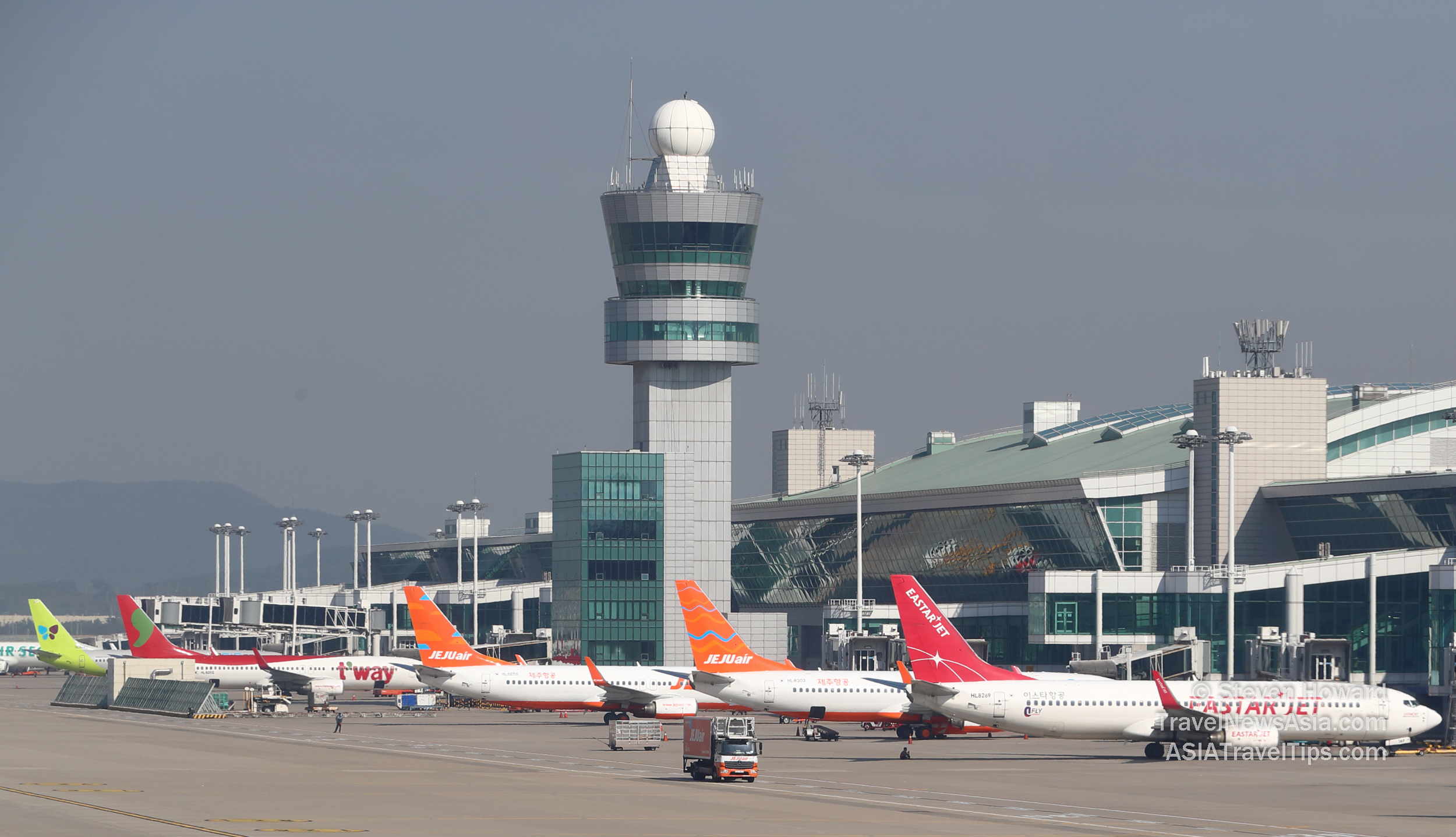|
SITA, a leading IT provider for the air transport
industry, has made six predictions about how ultra-fast 5G
networks will bring major change to airports, airlines, and
passengers.
With download speeds for mid-band 5G of up to 400
Mbps, and perhaps even well beyond that in the future, there is no
doubt that 5G will be a game-changer. The potential for innovation is huge and airports,
airlines, and passengers will feel the force of 5G in very
different ways.
SITA�s predictions are based on unique IT insights
and emerging air transport industry technology trends. They follow
hot on the heels of 5G trials like the recent ones carried out by
both London Gatwick Airport and Beijing�s new Daxing International Airport services which signpost our entry into a new era of
ultra-connected air travel.

Gilles Bloch-Morhange,
VP SITA Platform, said, �5G is already enhancing our existing
applications at airports, for aircraft communications, airport
operations, baggage management, and of course passenger
processing. And it�s impossible to talk about 5G without
discussing Internet of Things, Artificial Intelligence and the
other applications it enables. We�re already using 4G for IoT
applications for several applications around our biometric
passenger processing solution, such as Smart Path and baggage
management and the uptake of 5G will provide many more
opportunities.�
5G is coming fast. According to
CSS Insight data, there will be 340 million 5G connections
globally by 2021 and a staggering 2.7 billion by 2025, mostly in
developed markets. In money terms, in the aviation industry 5G
amounted to just USD 0.2 billion in 2019 but is projected to
reach USD 4.2 billion by 2026.
Fast forward: how
will we use 5G in 2025?
- 5G will be the
lifeblood of IoT
5G will soon be commonplace at airports
and the idea of everything intelligently connected to everything
will be viable.
The Internet of Things (IoT)
brings the inherent need to manage increasing amounts of objects
and therefore data. Today�s 4G technology can manage around 10,000
devices in each square kilometer; a 5G network can manage a
million. Multiple objects at airports will interact with people
and objects will interact among themselves.
With
5G, connectivity will be much more fluid and flexible. The new
networks will enable massive data flows, providing secure,
real-time, predictive and historic views of airport operations.
This will make collaboration between airports, airlines, ground
handlers, air traffic managers and concession holders easier and
effective.
The result will be the intelligent
monitoring of queues throughout the airport and tracking and
controlling autonomous vehicles that assist passenger journeys.
Vehicles on the ramp will be served by connected smart tugs and
baggage carts. Wheelchairs, mobile kiosks, and robotic assistants
will be controlled remotely.
It is not all about
bandwidth. 5G�s low latency will make autonomous vehicles much
safer. With signals going up to 100 times faster than 4G, the
speed of digital instructions will make the difference between a
vehicle traveling tens of meters or just a few centimeters before
taking corrective action.
- 5G will power air
transport-specific AI applications
5G connected Artificial
Intelligence (AI) will solve major pain points at airports and
borders.
For example, biometrically matching passengers to their
bags will be simple. AI will be able to recognize unique scuff
marks, creases, and material characteristics to distinguish
between seemingly identical bags and match them to the correct
passenger.
AI-assisted computer vision will
continually scan boarding gate areas and intelligently predict
capacity issues for hand luggage on flights and enable staff to
act accordingly before boarding.
- 5G will drive
operational efficiency, increase ancillary revenues and cut costs
Putting IoT and 5G together will offer great opportunities
for airlines and airports to unlock the value of all their data to
deliver tangible business benefits.
All airport
assets will be connected, making monitoring efficiency and
optimizing usage much simpler. It will, for example, provide the
tools to make vehicle usage around the airport more efficient,
delivering considerable savings in fuel costs and overall
resources, including labor.
- 5G will mean
exploitation of the potential of �flying data centers�
5G
will enable the next-generation aircraft to exchange vast amounts
of data around the airport and at the gate. The fast transmission
of aircraft data, and analysis of that data, will enable
pro-active maintenance, quicker aircraft turn-around, more on-time
departures and, most importantly, an improved customer experience.
Convergence of 5G and satellite communications
will serve the end-to-end approach of the aircraft as an IoT-flying
device, connecting it with all the relevant systems.
- Airports will control Wi-Fi quality and have improved
disruption management capabilities
We see opportunities in
licensed and unlicensed 5G spectrums thanks to new 5G standards.
Airports will have more control of quality of service in their
private and public spaces, converging 5G with Wi-Fi networks to
create a seamless mobile experience, with continuous connectivity.
5G is likely to replace the commonly used digital
radio communications service TETRA, which is only voice-enabled,
for operational and mission-critical services, providing a secure
network for running airport operations. Airport staff will have
access to real-time rich video updates and live feeds based on
evolving scenarios and locations, as well as CCTV feeds for
computer vision analysis for many functions and enabled remote
biometrics.
- 5G will deliver the digital
traveler promise
For passengers, real-time augmented
reality and personalized mobile services will be provided,
combining all data exchanged from the various applications and
interactions with the building and objects. The airport will
provide passengers with relevant, contextualized information and
services to assist and entertain them.
HD films
will download in seconds, entire series will be available to watch
offline almost instantly and passengers will be able to live
stream sports events in crystal clear quality, no matter how busy
the airport.
See latest
Travel News,
Interviews,
Podcasts
and other
news regarding:
SITA,
Future,
5G.
|
Headlines: |
|
|
